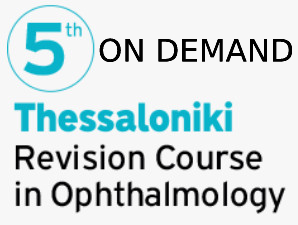Journal: European Journal of Ophthalmology
Manuscript ID EJO-20-1351
Manuscript Type: Original Research Article
Date Submitted by the Author: 13-Aug-2020
Complete List of Authors:
Karasavvidou Evdoxia-Maria | Hippokrateio General Hospital of Thessaloniki, Department of Ophthalmology
Panos Georgios | Whipps Cross University Hospital, Barts Health NHS Trust, Eye Treatment Centre
Koronis Spyridon | Ophthalmica Clinic, Vitreoretinal & Uveitis Department
Kozobolis Vassilis | Democritus University of Thrace, Department of Ophthalmology
Tranos Paris | Ophthalmica Clinic, Vitreoretinal & Uveitis Department
Abstract
Purpose:
To investigate the correlation between outer and inner retina optical coherence tomography (OCT)
biomarkers and visual acuity in patients with idiopathic epiretinal membrane (iERM) and identify which of them may be predictive of visual function.
Methods:
A retrospective cross-sectional single-centre study was conducted that included patients diagnosed with
iERM. Spectral domain OCT images were obtained and assessed qualitatively and quantitively. The association of OCT parameters with best corrected visual acuity was analysed.
Results:
Charts of 97 eyes of 97 patients were reviewed. Central foveal thickness, maximal retinal thickness (MRT), photoreceptor outer segment length, outer foveal thickness, ganglion cell-inner plexiform layer complex thickening, inner retinal thickness and inner retinal layer irregularity index were among the major outcome measures. OCT scans were also assessed for the presence of cotton ball sign, ellipsoid zone disruption, ectopic inner foveal layer, disorganisation of retinal inner layers (DRIL), intraretinal fluid, subretinal fluid (SRF) and epimacular membrane rip. Univariate analysis showed statistically significant association between all the aforementioned parameters with worse vision, except for cotton ball sign and SRF. Multivariate analysis found that MRT and severe DRIL were strongly correlated with worse vision (p<0.001).
Conclusion:
MRT and severe DRIL should be considered as negative prognostic factors for visual acuity.
Keywords:
biomarkers, idiopathic epiretinal membrane, optical coherence tomography, visual acuity
Πατήστε εδώ για να δείτε τη δημοσίευση
Source: European Journal of Ophthalmology (EJO)


